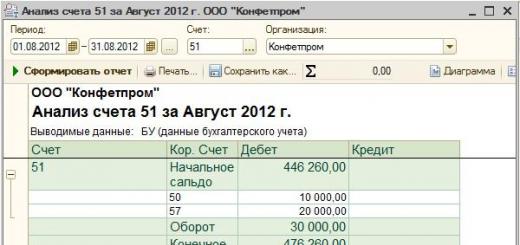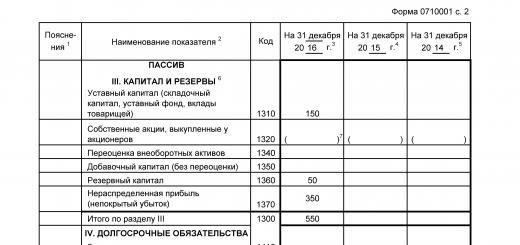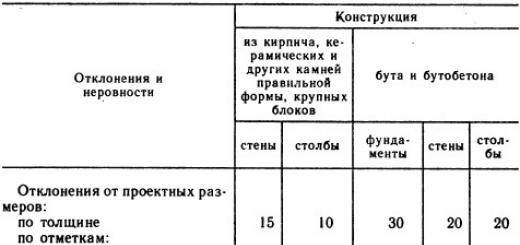All borrowers, having received a loan, are afraid of getting into the black list of debtors. Is it worth it to be so afraid of this "black" list!? What is a black list of credit histories!? What to do if you are on the black list of debtors? Banks are very fond of intimidating borrowers by blacklisting them, and they will never be able to get a loan from Russian banks again. Is it really!? In this article, I will try to answer your questions about what a black list of debtors is and how you can fix your credit history.
Black list of debtors - What is it
In order to be afraid or not to be afraid of something, it is very important to understand the essence and understand what and how it works. If you have learned about the existence of a black list, then you probably know such a term as "credit history". Credit history can be either good or bad. Those citizens who took out a loan, but did not miss a single monthly payment and repaid their debt on time, have a good credit history. Of course, it will not be difficult for such persons to get a new loan from the bank.
If a person has made at least one delay in the monthly payment, it will be much more difficult for him to get a loan on favorable terms in the future. The credit history of a borrower who has missed at least one monthly payment or is slightly late with payment begins to deteriorate. If several delays are made and more than one loan, then the credit history becomes bad - “black” and banks, seeing this, refuse to provide loans to a person. As such, the list of debtors - black or white, banks do not keep. Credit history is this "black list", which banks love to intimidate debtors so much.
Blacklist of bank debtors - Is it possible to fix a credit history
From the foregoing, we understand that credit history is usually called a black list of debtors. If bank employees intimidate you with the fact that it is impossible to get out of the black list of debtors, then do not believe them. You can fix your credit history. Of course, depending on how badly corrupted it may be, it may take more or less effort to change it.
There are many methods for correcting a credit history, so each person can regain the trust of financial institutions.
Now you have learned that there is no black list of debtors as such. Just think for yourself how long this list would be and whether it contained reliable information about borrowers without a credit history!? Do not be afraid to get on the "black list" of debtors, because it simply does not exist. Remember for yourself one simple rule - before being afraid of something, get to the heart of the matter and understand how it works.
It is better to repay debts on time, because this is the only way to avoid problems and make your life a little calmer and easier. But, if for some reason there are doubts about the credit history, you can look for the black list of bank debtors and see for yourself.
This simple action will relieve the anguish and help you understand why it is so difficult to get a new loan. In addition, it can be useful for those who are not going to take a loan yet, because with its help you can find out about all the accumulated debts and unpaid fines.
If there are any, you should not postpone their repayment for a long time, it is better to do it as soon as possible so that you do not run into trouble later and do not become a participant in the trial.
Given the above, it becomes obvious why it is so important to monitor your credit history and check the coverage of past debts. But how do you know if everything is paid? Where to check your credit history in 2018?
How to find out about accumulated debts?
First of all, considering the question of where to get information about outstanding loans and accumulated debts, it is worth clarifying that sometimes the process of obtaining such information takes time. Therefore, it is worth sending requests and starting to look for information in advance, so that later it will not be too late.
In total, there are 3 main ways to view the blacklists of debtors and clarify your credit history:
- contact the bank where the loan was previously taken;
- check in the database of the federal bailiff service;
- send a request to the credit bureaus.
Each described method has its positive and negative sides and reveals only part of the information about debts. To see not only the credit histories of individuals, the black list and information about loans, but also to clarify information about fines, unpaid alimony or other debts, it is better to use at least two of the presented methods. This is the only way to get all the data you need, because in all other cases the information will not be complete.
List of debtors who are prohibited from traveling abroad for 2018
Each time, issuing a new loan, the bank collects information about its client and starts a file on him, in which every detail important for the loan is entered. Later, all information about the loan and payments made is transferred to the credit bureau. It is to this bureau that all credit institutions turn to decide whether the next borrower can be trusted.
But it is no secret that each bank maintains its own credit history and collects its own personal dossier on customers. Usually, this information is decisive in making decisions on issuing loans.
Of course, only certain bank employees have access to such dossiers, and its disclosure is strictly prohibited. But every borrower has the right to receive information about their debts and loans, even if they are fully paid and closed. To do this, you need to visit the bank and request your credit history. You should have 2 documents with you:
- the passport;
- loan agreement (if any).
Some banks provide information about debts on their websites in the user's personal account. Naturally, to enter your personal account, you need a username and password.
In addition, some collection agencies also collect their lists of non-payers. But only those who had to deal with the activities of collectors can access them. That is, it will not be possible to see the list of debtors on the website of the National Debt Collection Service. Its publication violates the rights of borrowers and is prohibited by law.
National debt collection service, official website, list of debtors
The next way to get acquainted with the accumulated debts is to contact the federal bailiff service. By contacting this organization, you can see the black list of credit debtors by last name for free. There are two main ways to get the information you need:
- visiting the FSSP in person;
- by requesting information on the website of the organization.
The second method is much simpler and more efficient. To use it, you just need to go to the official website of the institution, and then indicate your last name in a form specially available for this. It is in the most prominent place on the home page of the site.
After entering the last name, it remains to enter a short code, which will be indicated right there, after which it will be possible to get acquainted with the results of the check. There are 2 main answers. The first option will indicate that nothing was found in the database, which means the complete absence of debts, and the second option will contain a table where all the basic information about debts is available.
It is worth knowing that the website of the federal bailiff service is the only place where information about debts and debtors is in the public domain. In all other cases, it is strictly confidential, and only persons established by law and the debtors themselves can get acquainted with it.
credit history bureau
 The last and most complete verification method is to query the database of credit bureaus. Such bureaus contain absolutely all information about loans and borrowings. This includes all information about payments made and delays.
The last and most complete verification method is to query the database of credit bureaus. Such bureaus contain absolutely all information about loans and borrowings. This includes all information about payments made and delays.
You can get your credit history in the following ways:
- by filling out an application on the website of the Central Bank;
- sending an application by mail;
- contacting a notary;
- using the services of credit bureaus (listed in the register of credit bureaus of the Central Bank of the Russian Federation);
- through credit institutions.
Each of these methods does not contain anything complicated. To use them, you need a passport, phone number and e-mail. In addition, in some cases, money may be required (notary services are not free).
The BKI will not be able to see the black list of debtors on loans from Russian banks, the names of unreliable borrowers and other similar information. As mentioned earlier, it is not subject to disclosure. But on the other hand, in it you can get acquainted with your own credit history and find out if there are any unpaid loans that have been forgotten for some reason. At the same time, a request for obtaining a credit history is free if you send it no more than once a year.
Why should you be aware of your debts?
Money matters require special care and attention. You should be aware of your debts and make sure that they are paid on time. Otherwise, you can face the most unpleasant consequences:
- transfer of debt to collectors;
- a ban on traveling abroad;
- refusal to issue new loans;
- high interest rate and small future loan amount;
- withholding part of the salary to pay the debt;
- arrest of accounts and property.
All these troubles can overtake someone who did not follow the timely payment of debts and does not consider it necessary to pay their bills. At the same time, a meeting with collectors and problems with obtaining new loans are possible after small delays.
All other consequences of uncovered debts can occur only after the appropriate court decision is made. But it is important to know that, depending on the amount of the debt, most of these decisions will be made through the issuance of a court order. This should be remembered by debtors abroad who did not pay the loan on time, since the issuance of a court order does not require the obligatory presence of the defendant at the court session, and the time for appeal is minimal.
A loan is an easy way to get money quickly, but sooner or later you have to pay it back with interest. Not all borrowers are able to repay the debt on time, strictly in accordance with the loan agreement. The first measure taken by the bank against the defaulter is blacklisting. Each bank or microfinance organization has its own database of loan debtors, it is not available to the general public, but you can check the fact of being on the black list.
Client base of banks
Blacklist Concept
The black list is a group of clients who periodically violate the terms of the loan agreement. In some banks, I call it differently - stop list. This includes clients who:
- do not pay the loan at all;
- make payments later than the term specified in the contract;
- do not pay the next payment in full.
In relation to such borrowers, banks take measures ranging from notifications and reminders, ending with the assignment of rights to claim debt to collection agencies. This may end in a lawsuit, which threatens the debtor with seizure of property and other restrictions.
Credit history and blacklist are different concepts. From the stop list, banks cross out the client who settled the dispute on time, data is stored in the CI for 15 years.
But according to the law, each creditor is obliged to transfer data to the Credit Bureau about unscrupulous borrowers.
What threatens the borrower with a black list
You can be blacklisted only if you systematically violate the terms of the contract. This is not just once, but several, and late payments appear through the fault of the borrower if he does not have time to pay the loan on time.
After the first delay, and if it is the only one, the bank does not blacklist the client, it can only issue a warning.
But it is in the power of the client to change the situation if he properly fulfills his obligations. The statistics in the bank's database are updated and, over time, the borrower is removed from the stop list, which will allow him to reapply for a loan.
How to check the blacklist
It is necessary to immediately determine that the list of loan debtors is available only to its employees in order to assess the identity of a potential borrower. This information is not posted online. But you can and should check your data in the following instances:
- bureau of credit histories;
- on the FSSP website;
- at the bank where the loan was previously issued;
- lists of collection organizations.
Now in more detail, in order to inquire about your credit reputation in a particular bank, you need to come to the office with a passport and ask the teller to make a report on the paid loan. It will clearly show whether the debt is repaid and how timely the borrower fulfilled his obligations. But this measure does not guarantee the client that he is not on the black list.

Loan debts
The FSSP website contains information about debts and recoverers when a court decision was made against the debtor. You can make a request online, for this, through the search engine, you need to find the official website of the FSSP and follow the following instructions:
- select "Services" in the top menu bar;
- then go to the tab "Database of enforcement proceedings";
- select the region of the Russian Federation;
- enter your full name and date of birth;
- a table with data on debt collection will be displayed on the monitor.
In the CI Bureau, a request can be made remotely, through the official resource of the system. At the request of the service, you must enter passport data and receive a report. The service is free, if you use it once a year, re-applying will cost within 1000 rubles.
Collection agencies have lists of debtors for the loans they work with. Is it possible to find out if there is a surname there? No you can not, this is private information. Only employees of the organization have access to it. But the client will definitely find out if he is on the list of the collection agency, the employees themselves will inform him about this in a short time.
Please note: the database of debtors on loans of Russian banks is strictly confidential information, no one has the right to disclose it. This is the law "On Personal Secrets", which is regulated by the Constitution of the Russian Federation.
Will the case go to trial?
Many debtors are afraid that collectors will sue the debtor. But this is the most extreme measure and they rarely resort to it. To make it clear: the task of the collector is to settle the dispute with the debtor in a pre-trial order. Accordingly, if the debt is paid in small installments, then there will be no trial.
The reverse side of the coin is that banks charge fines and penalties, which can exceed the principal and interest on the loan. Only the court can stop the process, but the collection of debts will no longer be collected by collectors, but by bailiffs.
What to do with a client who is blacklisted
It is up to the borrower to change the situation and restore the trust of the lender. To do this, you can take several steps:
- close all debts and loans;
- open a deposit account in a bank where the client is blacklisted and regularly deposit funds into it;
- if a borrower from the black list receives wages on a plastic card, then you can become a payroll client of the bank.
The statistics will be updated and the client will be able to borrow from a financial institution again. Things will be much worse if his credit history is hopelessly damaged, because absolutely all creditors check it. Although some of them may turn a blind eye to past debts, provided that they are already closed.

Find out the black list of banks
For those who are interested in how to find out the blacklist of loan debtors, we can say unequivocally that this is impossible to do. The only solution is to fulfill your obligations under loan agreements in a timely manner, calculate your financial capabilities and always get in touch with the lender in order to avoid conflict situations.










